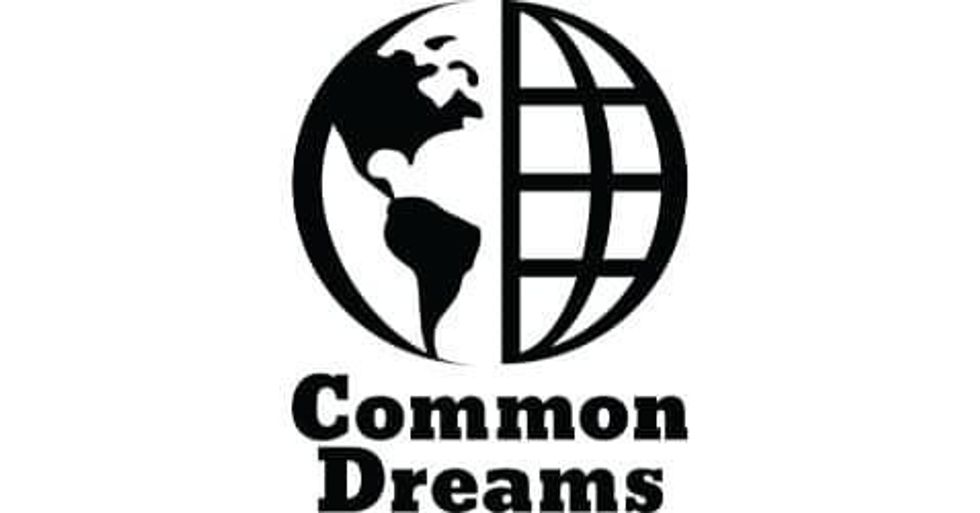

SUBSCRIBE TO OUR FREE NEWSLETTER
Daily news & progressive opinion—funded by the people, not the corporations—delivered straight to your inbox.
5
#000000
#FFFFFF
To donate by check, phone, or other method, see our More Ways to Give page.


Daily news & progressive opinion—funded by the people, not the corporations—delivered straight to your inbox.

South Korean government officials check fruit in the disaster zone near Gumi nearly two weeks after 8 tons of hydrofluoric acid leaked from a chemical plant. (Photo: AFP/Getty Images).
Nearly two weeks after a substantial--and largely unreported--spill at a South Korean chemical plant, the government on Monday designated a "special disaster zone" after more than 3,000 people were treated for chemical-related illnesses.
Five people were killed in a Sept. 27 explosion and 18 others injured as employees unloaded hydrofluoric acid from a tanker at the Hube Globe plant in Gumi, about 200 kilometers southeast of Seoul.
Hydrofluoric acid can damage lungs, bones and the nervous system, according to The Telegraph.
In the 10 days since the leak, more than 3,000 people have become sick, and livestock are now showing symptoms of a cold, according to the Telegraph. Crops and fruit on more than 2 million square meters have withered. Damage was estimated at $15.9 million, Yonhap reported.
Yonhap News Agency of South Korea reported that the designation as a disaster zone followed a visit to the site by inspectors, a subsequent meeting of vice ministers and a determination that "human and property damage from the unprecedented leak of poisonous gas snowballs."
"Last week's examination showed the damage is presumed to be too extensive for the local government to handle on its own," Yook Dong-han, vice minister of the PMO, told Yonhap News. "The government will make detailed measures and standards to administer support, and plans to carry out another round of in-depth inspections into the region as early as possible."

Trump and Musk are on an unconstitutional rampage, aiming for virtually every corner of the federal government. These two right-wing billionaires are targeting nurses, scientists, teachers, daycare providers, judges, veterans, air traffic controllers, and nuclear safety inspectors. No one is safe. The food stamps program, Social Security, Medicare, and Medicaid are next. It’s an unprecedented disaster and a five-alarm fire, but there will be a reckoning. The people did not vote for this. The American people do not want this dystopian hellscape that hides behind claims of “efficiency.” Still, in reality, it is all a giveaway to corporate interests and the libertarian dreams of far-right oligarchs like Musk. Common Dreams is playing a vital role by reporting day and night on this orgy of corruption and greed, as well as what everyday people can do to organize and fight back. As a people-powered nonprofit news outlet, we cover issues the corporate media never will, but we can only continue with our readers’ support. |
Nearly two weeks after a substantial--and largely unreported--spill at a South Korean chemical plant, the government on Monday designated a "special disaster zone" after more than 3,000 people were treated for chemical-related illnesses.
Five people were killed in a Sept. 27 explosion and 18 others injured as employees unloaded hydrofluoric acid from a tanker at the Hube Globe plant in Gumi, about 200 kilometers southeast of Seoul.
Hydrofluoric acid can damage lungs, bones and the nervous system, according to The Telegraph.
In the 10 days since the leak, more than 3,000 people have become sick, and livestock are now showing symptoms of a cold, according to the Telegraph. Crops and fruit on more than 2 million square meters have withered. Damage was estimated at $15.9 million, Yonhap reported.
Yonhap News Agency of South Korea reported that the designation as a disaster zone followed a visit to the site by inspectors, a subsequent meeting of vice ministers and a determination that "human and property damage from the unprecedented leak of poisonous gas snowballs."
"Last week's examination showed the damage is presumed to be too extensive for the local government to handle on its own," Yook Dong-han, vice minister of the PMO, told Yonhap News. "The government will make detailed measures and standards to administer support, and plans to carry out another round of in-depth inspections into the region as early as possible."

Nearly two weeks after a substantial--and largely unreported--spill at a South Korean chemical plant, the government on Monday designated a "special disaster zone" after more than 3,000 people were treated for chemical-related illnesses.
Five people were killed in a Sept. 27 explosion and 18 others injured as employees unloaded hydrofluoric acid from a tanker at the Hube Globe plant in Gumi, about 200 kilometers southeast of Seoul.
Hydrofluoric acid can damage lungs, bones and the nervous system, according to The Telegraph.
In the 10 days since the leak, more than 3,000 people have become sick, and livestock are now showing symptoms of a cold, according to the Telegraph. Crops and fruit on more than 2 million square meters have withered. Damage was estimated at $15.9 million, Yonhap reported.
Yonhap News Agency of South Korea reported that the designation as a disaster zone followed a visit to the site by inspectors, a subsequent meeting of vice ministers and a determination that "human and property damage from the unprecedented leak of poisonous gas snowballs."
"Last week's examination showed the damage is presumed to be too extensive for the local government to handle on its own," Yook Dong-han, vice minister of the PMO, told Yonhap News. "The government will make detailed measures and standards to administer support, and plans to carry out another round of in-depth inspections into the region as early as possible."
